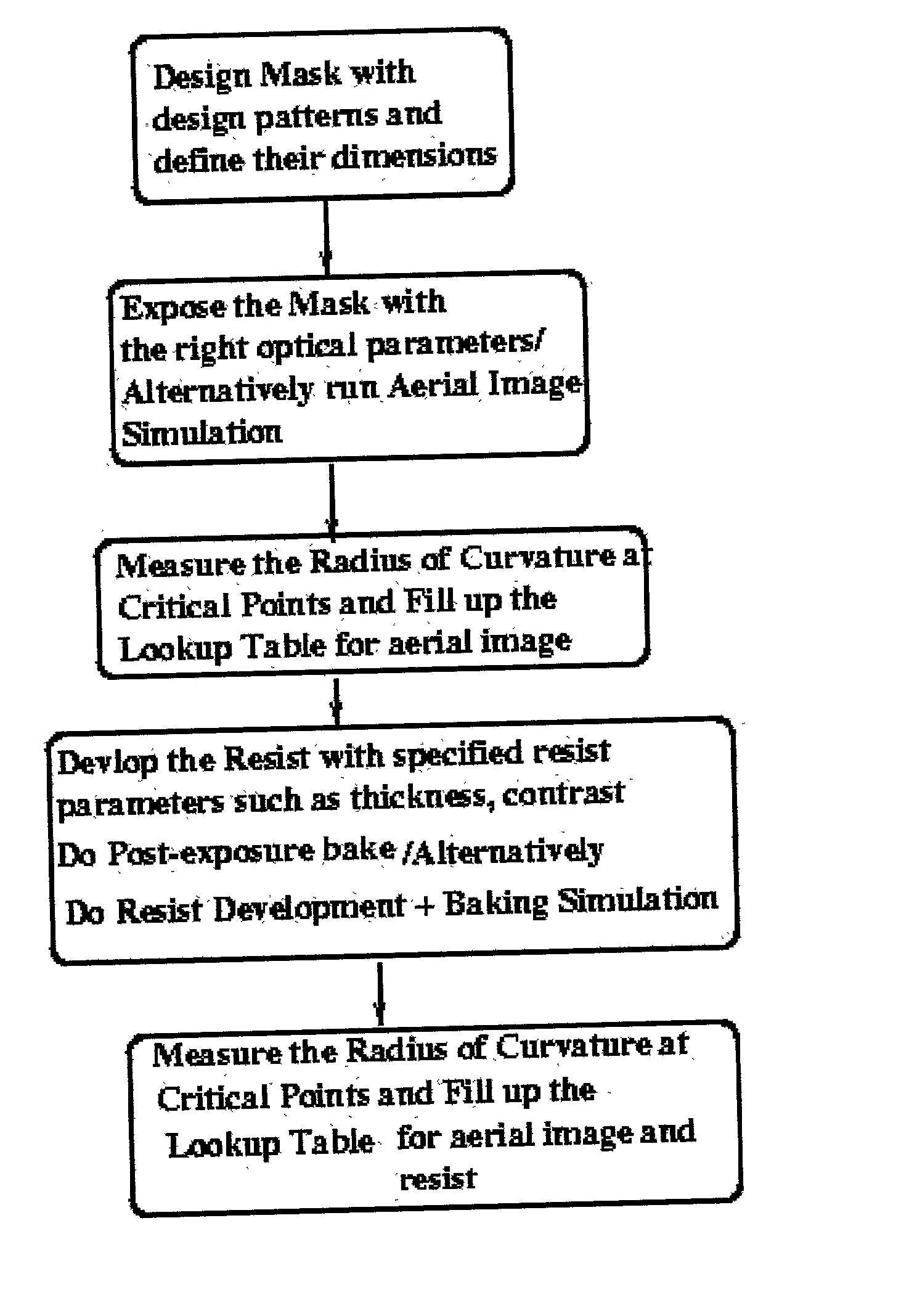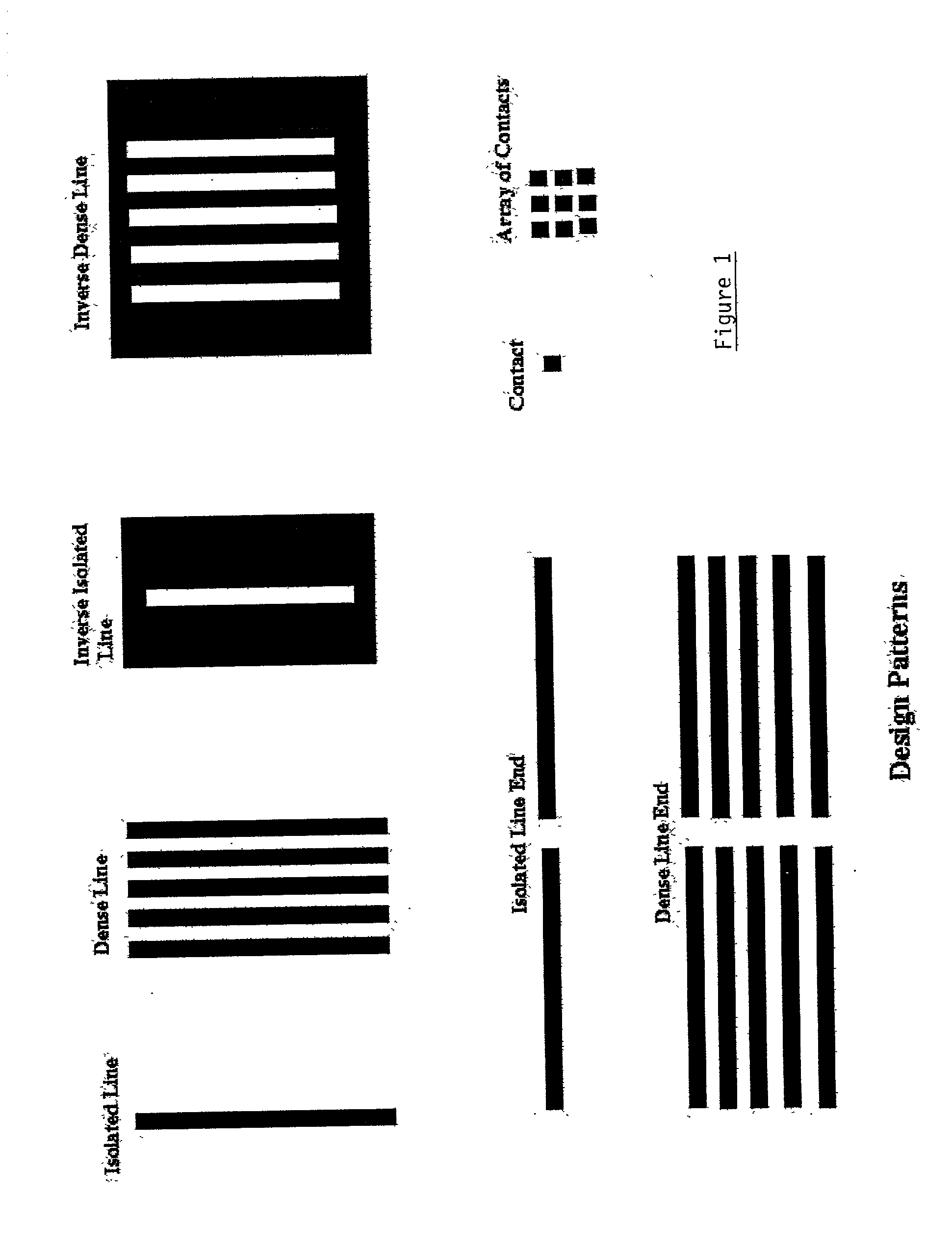Method for correcting optical proximity effects in a lithographic process using the radius of curvature of shapes on a mask
a technology of optical proximity and lithographic process, which is applied in the direction of photomechanical equipment, instruments, originals for photomechanical treatment, etc., can solve the problems of high uncertainty, the process of designing tools for automating chip design is extremely challenging, and the capacity of the lithographic process is on the verge of reaching the limits, so as to reduce the sharpness of the image and minimize any distortion
- Summary
- Abstract
- Description
- Claims
- Application Information
AI Technical Summary
Benefits of technology
Problems solved by technology
Method used
Image
Examples
example 2
[0068] Shown in FIGS. 8.1 and 8.2 are, respectively, a shape in the form of an L-shaped bracket and the simulated shape. This shape is used to measure the radius of curvature at points R1, R2, R3, R4, R5 and R6 (FIG. 8.2). The output curve is depicted after using any conventional method for generating a Bezier curve (FIG. 8.3). However, as previously stated, this shape is not easily manufacturable. Accordingly, a new shape is created having only Ortho-45 sides (FIG. 8.4).
[0069] The last two stages comprising the optical proximity correction are further described in the flow chart shown in FIG. 9 which includes generating a mask with limited radius of curvature and approximating smooth curves with Ortho and Ortho-45 sides.
[0070] Hereinafter is described a step by step description of the algorithm. Note that an input to this flowchart is the actual layout of the designed mask used in conjunction with the table of maximum radius of curvature described with reference to flowchart of FIG...
PUM
| Property | Measurement | Unit |
|---|---|---|
| radii of curvature | aaaaa | aaaaa |
| radius of curvature | aaaaa | aaaaa |
| curved shapes | aaaaa | aaaaa |
Abstract
Description
Claims
Application Information
 Login to View More
Login to View More - R&D
- Intellectual Property
- Life Sciences
- Materials
- Tech Scout
- Unparalleled Data Quality
- Higher Quality Content
- 60% Fewer Hallucinations
Browse by: Latest US Patents, China's latest patents, Technical Efficacy Thesaurus, Application Domain, Technology Topic, Popular Technical Reports.
© 2025 PatSnap. All rights reserved.Legal|Privacy policy|Modern Slavery Act Transparency Statement|Sitemap|About US| Contact US: help@patsnap.com



